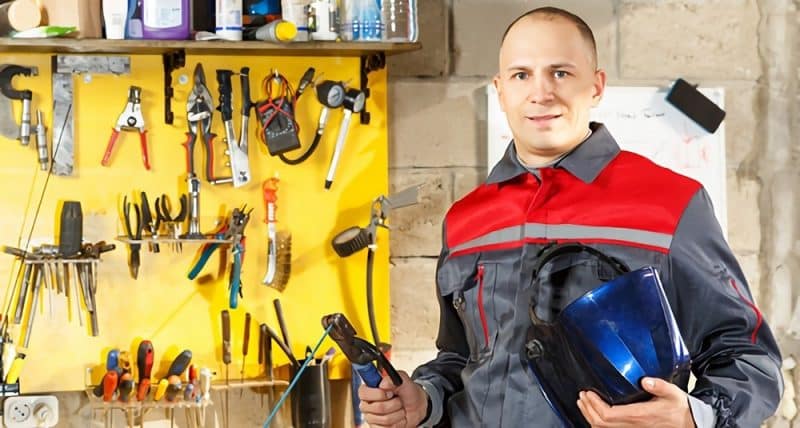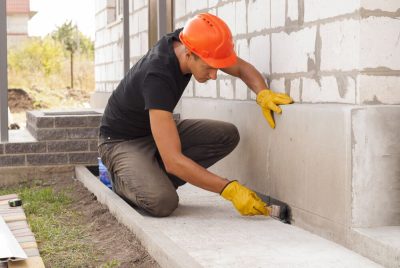
Are you looking to start welding but don’t know the different types of welders? Maybe you want to branch out into other types of welding and can’t decide which welder is the right choice for you. Finding out about the types of welders can be tricky, with conflicting responses online leaving you unsure where to turn or who to trust.
Our guide today will put the uncertainty to bed! We have teamed up with Renteca to show you the different types of welders you can choose from.
Different Types of Welders
There are four common types of welders you can use at home, including MIG, FCAW, TIG, and Stick welding. We have outlined each type with some guidance below to help you see which is the best option for you.
MIG/Gas Metal Arc Welding (GMAW)
MIG welding uses a wire welding electrode on a spool, automatically fed at a constant speed. You can pre-select this speed and adjust it when needed. The arc, created by an electrical current between the wire and base metal, will melt the wire, joining at the base and creating a high-strength weld.
MIG requires little cleaning and can be used on thick or thin metals. It can create clean welds on stainless steel, steel, and aluminum. MIG welding is the easiest learning process and offers the highest welding speeds possible.
You get better control over thinner metals and can use the same equipment for flux-cored welding.
Flux-Cored Arc Welding (FCAW)
Like MIG, flux-cored arc welding is a wire-feed process that does not require shielding gas. The flux-cored wire shields the arc from contamination and offers an efficient approach, especially when working in windy conditions, outdoors, or on dirty materials.
Its high speeds and portability make it a popular choice in construction. It allows for out-of-position welding and deep penetration, allowing for thick sections. It is more forgiving when welding with rusty or dirty material and offers an increased metal deposition rate.
TIG/Gas Tungsten Arc Welding (GTAW)
TIG welding uses a non-consumable tungsten electrode to produce the weld. A shielding gas and filler metal protect the weld area from contamination. Argon is usually used as the gas, though some welds, like autogenous welds, do not require shielding.
A constant-current power supply produces energy to conduct across the arc using highly ionized gas and metal vapors called plasma. You can also adjust the heat input with a foot control while welding, tailoring it to ensure the best possible welds.
This process provides precise, high-quality welds. You can expect highly aesthetic weld beads, too, making this an excellent choice for welders who are focused on the final appearance.
Stick/Shielded Metal Arc Welding (SMAW)
Stick welders have been the most popular type for years. They use an electric current from a gap between the metal and arc-welding electrode. Stick welders allow you to weld most joints or alloys and can be used indoors or outdoors, even in drafty areas. They are considered the most economical method, and you can work with rusty or dirty metals, creating a good bond with ease.
However, stick welders have a downside. They can only work with metals no thinner than 18 gauge, require frequent rod changing, and emit spatter that leaves you with lots of cleaning once you have finished welding.
Stick welding is also tricky to learn and use, especially when striking and maintaining an arc. The welders are available in DC, AC, or AC/DC, with AC being the most economical option. Stick welders are best suited to home maintenance chores, hobbyists, and farmers and work well on thicker materials.
What to Consider When Choosing a Welder
There are a few things to consider when choosing a welder, including your intended use, the power requirements, and cost. We have listed the factors you should consider below:
- Cost: How much does the welder cost? Is it within your budget?
- Materials: What costs will you need to consider for materials?
- Intended Use: What do you want to use the welder for? Will you want it for additional use in the future?
- Amperage: What amperage do you need?
- Power Requirements: What power requirements do you need?
- Cleaning Requirements: What cleaning requirements does your potential welder have? Are these attainable for you?
Considering these questions, you can narrow down your search and find the right welder for your needs.
Final Thoughts
Whether you want an affordable welder that can handle high temperatures or create beautiful weld spots, there is a welder on this list for you! Use these types of welders to help you narrow your search and find a welder that helps bring your creations to life.








